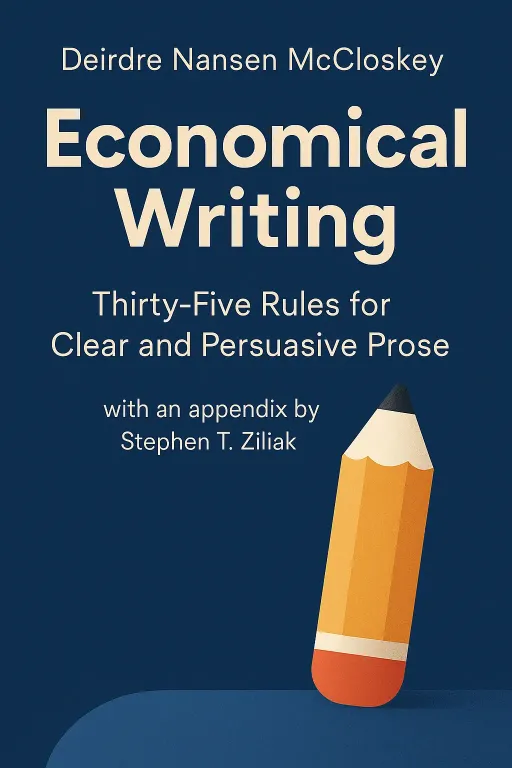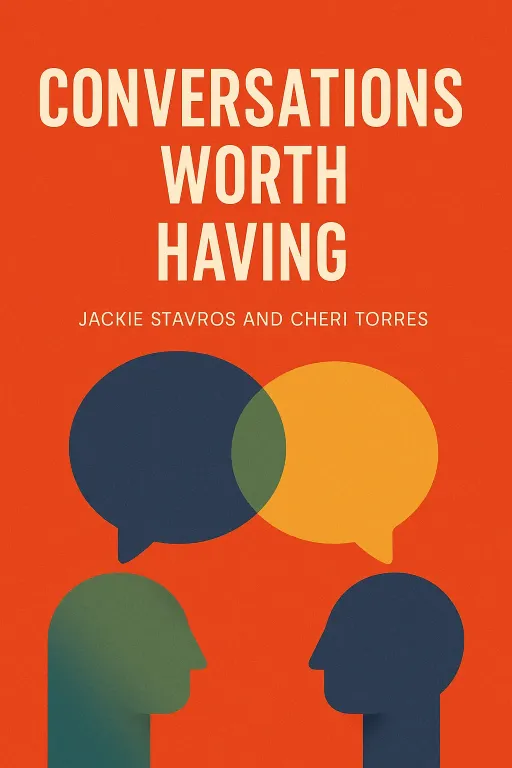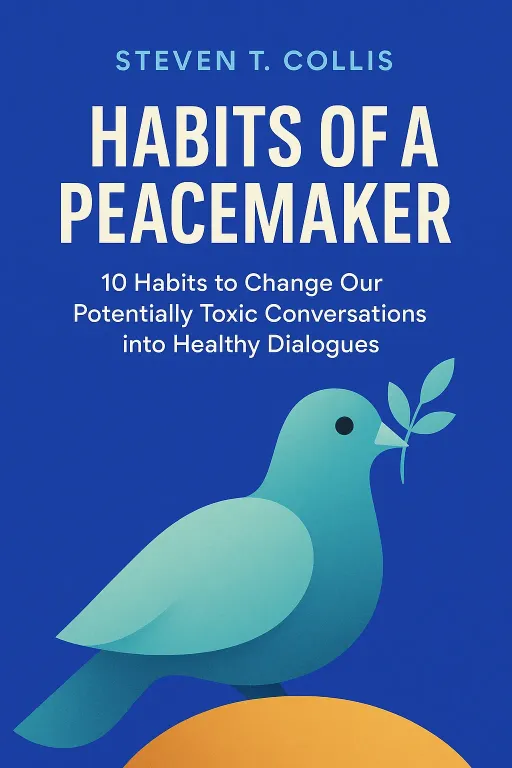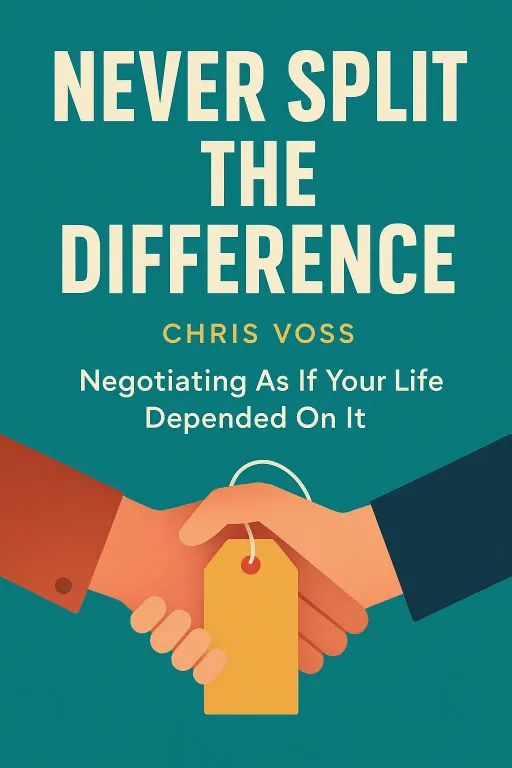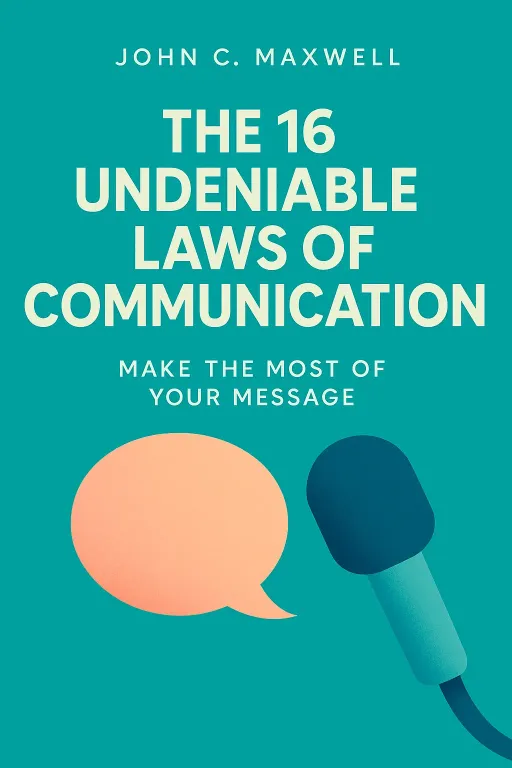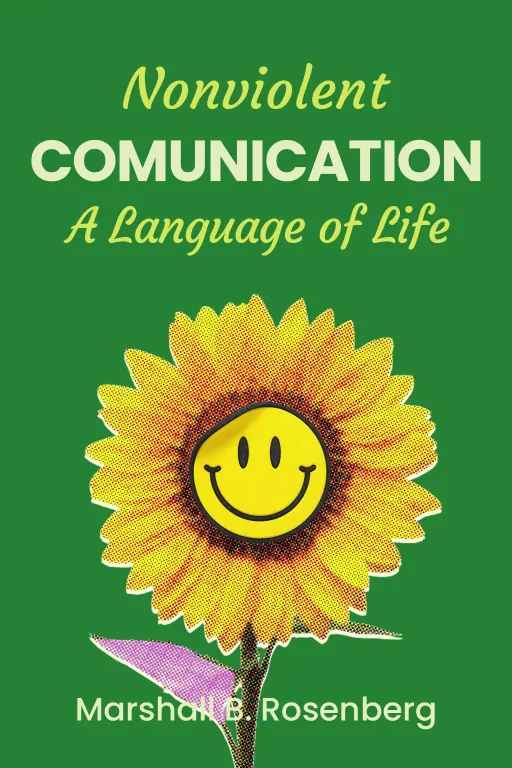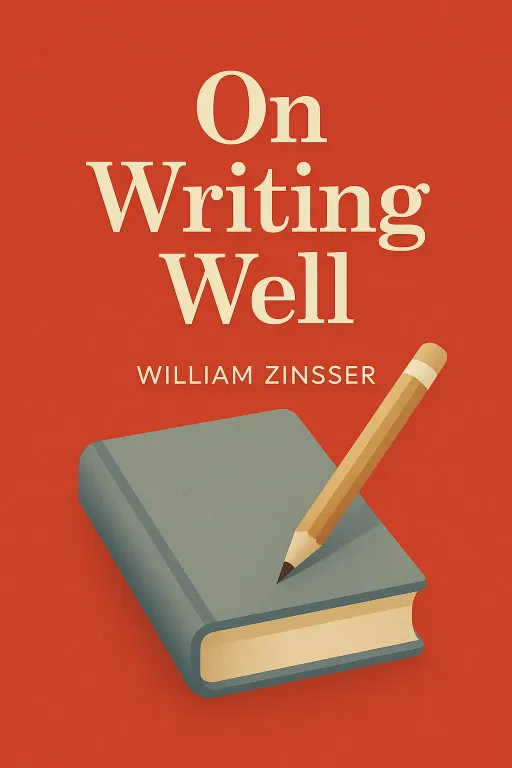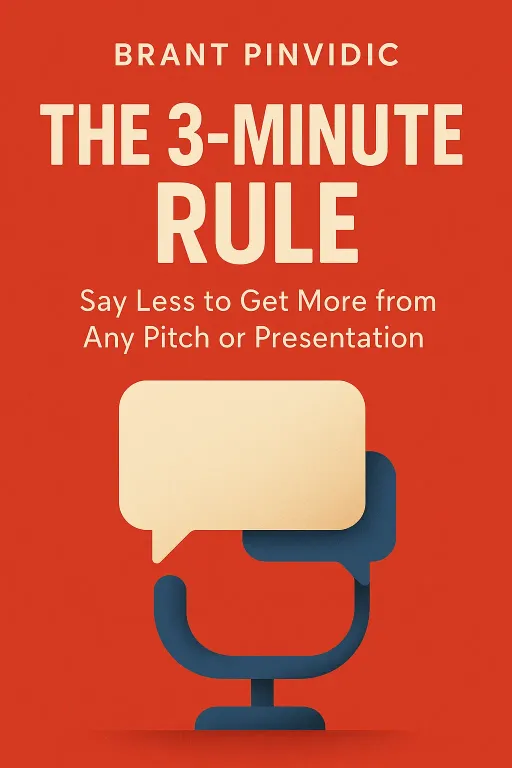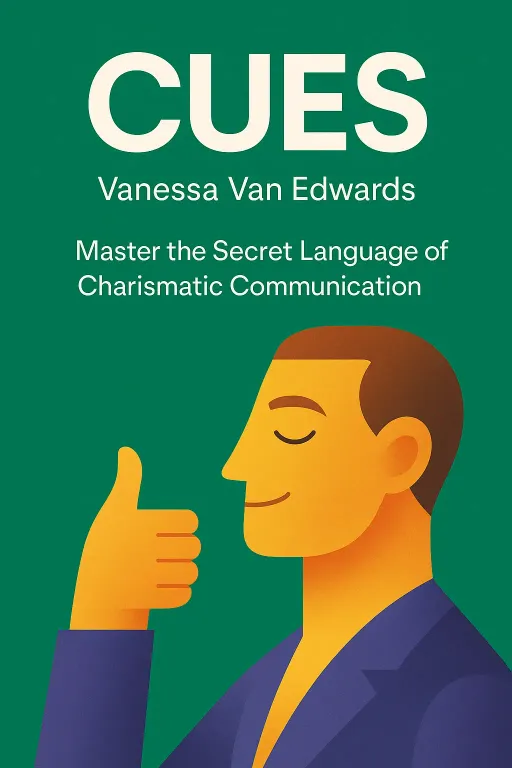
** The Einstein Effect: Decoding the Cues of Charisma
12 minGolden Hook & Introduction
SECTION
Dr. Roland Steele: What does a Nobel Prize-winning physicist have in common with a local plumber? It sounds like the start of a bad joke, but the answer reveals a profound secret about how we perceive competence and power. The image of Albert Einstein on a plumber's van is a masterclass in communication, a 'cue' that instantly signals intelligence. And according to Vanessa Van Edwards' book,, our lives are filled with these hidden signals. Welcome to the show. I’m Dr. Roland Steele.
Kinabalu: And I’m Kinabalu. That's a fascinating opener, Roland. It immediately makes me think about all the unconscious signals we send and receive every single day. As someone who's always looking to improve my habits, the idea that communication itself is a series of habits is incredibly appealing.
Dr. Roland Steele: Exactly. It's not magic; it's a system. And that's what we're exploring today. We're diving into Van Edwards' work to understand this hidden language. Today we'll tackle this from three perspectives. First, we'll decode the fundamental equation of charisma: warmth plus competence.
Kinabalu: The building blocks. I like it.
Dr. Roland Steele: Then, we'll uncover the surprising power of those visual cues with that very story involving Albert Einstein.
Kinabalu: I'm genuinely curious about that one.
Dr. Roland Steele: And finally, we'll explore the authenticity trap and what happens when your cues betray you in the most high-stakes moments. So, let's get into it.
Deep Dive into Core Topic 1: The Charisma Equation
SECTION
Dr. Roland Steele: So, Kinabalu, let's start with that core idea. Most of us think charisma is something you're born with. You either have it or you don't. But Van Edwards argues it's an equation: Warmth plus Competence equals Charisma. As someone focused on habits, what does that framework do for you?
Kinabalu: It demystifies it. It takes charisma out of the realm of, you know, genetic lottery and puts it into the category of a skill. And any skill can be broken down into habits. The equation, Warmth + Competence, gives you two clear variables to work on. It's not this vague "be more charismatic" advice. It's "dial up your warmth cues" or "bolster your competence signals." That's actionable.
Dr. Roland Steele: Actionable is the key word. The book explains that in any interaction, we're subconsciously asking two questions about the other person. First: "Can I trust you?" That's warmth. And second: "Can I rely on you?" That's competence. If you only project competence, you can seem intimidating or cold. If you only project warmth, you might be seen as friendly but perhaps not credible.
Kinabalu: So you risk being either the unapproachable genius or the lovable fool. Neither is ideal.
Dr. Roland Steele: Precisely. And the book gives a fantastic example of someone who had to consciously solve this equation: the actress Goldie Hawn.
Kinabalu: Oh, interesting. I know her as a famous comedian, definitely high on the warmth scale.
Dr. Roland Steele: Exactly. For decades, her public image was, in her own words, "funny and sometimes bubble-headed." So in 2003, when she decided to launch a serious educational non-profit called MindUp—a mindfulness program for children—she faced a credibility problem. People loved her, but would they trust her with their children's education? She had warmth in spades, but she needed to signal competence.
Kinabalu: So how did she do it? Did she try to act more serious and change her personality?
Dr. Roland Steele: That's the brilliant part—no. She didn't abandon her strength. Instead, she built a fortress of competence around her natural warmth. She partnered with top neuroscientists and psychologists to conduct large-scale studies validating the program's effectiveness. The MindUp website became a perfect blend of cues. You'd see pictures of Goldie laughing with smiling kids—that's the warmth. But right next to it, you'd see hard data, statistics, and logos of the universities she partnered with. That's the competence.
Kinabalu: That is so smart. So she didn't abandon her natural warmth; she it with undeniable competence. It's not about being someone else, but about adding the missing ingredient to your existing personality. That feels like a much more achievable habit than trying to fake a new persona.
Dr. Roland Steele: And it worked. The program has now helped over seven million students. She balanced the equation. She proved she was both trustworthy reliable. It’s a powerful lesson that you don't have to sacrifice one for the other. You need both.
Kinabalu: It makes you think about your own default setting. Do people see me as more warm or more competent? And which one do I need to consciously practice adding to my interactions? It's a real diagnostic tool for your own social habits.
Deep Dive into Core Topic 2: The Einstein Effect
SECTION
Dr. Roland Steele: Exactly. It's about adding the right ingredient. And sometimes, that ingredient is purely visual. Which brings me back to my opening question, Kinabalu. Albert Einstein and a plumber. Let me tell you this story from the book, because it perfectly illustrates the power of a competence cue.
Kinabalu: I'm ready. This sounds like a great case study.
Dr. Roland Steele: So, the author highlights a company called Einstein Plumbing. Their service trucks are their main form of advertising. And on the side of every truck is a large picture of Albert Einstein, along with the tagline, "The smart choice."
Kinabalu: Okay, I see where this is going. It's a visual shortcut.
Dr. Roland Steele: It's a total shortcut! The moment you see that truck, your brain doesn't just see a plumber. It sees Einstein. And what does Einstein represent? Genius, intelligence, complex problem-solving. You're not consciously thinking, "This plumber has a deep understanding of theoretical physics." But your brain's neural maps for "smart" and "capable" are firing. The company is borrowing Einstein's competence.
Kinabalu: They're creating an association. It’s branding, but on a deeply psychological level. You immediately assume they'll be able to figure out your tricky pipe problem because they've aligned themselves with the ultimate problem-solver.
Dr. Roland Steele: Precisely. And the book contrasts this with another plumbing franchise that took the opposite approach. Their owner wanted to appeal to women who might be nervous about letting a stranger into their home. So, what did he do? He painted all his trucks pink.
Kinabalu: Pink? For a plumbing company? That's a bold choice.
Dr. Roland Steele: A very bold choice. And on the side of the pink truck, there was a picture of an elegant woman in a white blouse. The entire brand was designed to signal warmth, cleanliness, and politeness. Their plumbers even wore disposable booties and vacuumed under the sink. Einstein Plumbing was selling competence. This company was selling trust and warmth.
Kinabalu: Two completely different solutions to the same business problem, just using different cues. That's fascinating. It's strategic signaling. And it makes you realize we're all doing this, whether we know it or not. Today, that's your LinkedIn profile picture, the books on the shelf in your Zoom background, or even the font on your resume.
Dr. Roland Steele: You're absolutely right. The book mentions a study where the same person was rated as 8 percent more competent just by wearing glasses in their photo. Eight percent! For such a small change.
Kinabalu: Wow. So we're all running our own 'Einstein Plumbing' or 'Pink Truck Plumbing' with our personal brand. We're sending these visual cues constantly. The question is, are we sending the ones we intend to? Are we signaling warmth when we need to project competence, or vice versa? It’s a constant balancing act.
Deep Dive into Core Topic 3: The Authenticity Trap
SECTION
Dr. Roland Steele: We are indeed. But this is where it gets dangerous. You can't just put on glasses or a smart logo and expect it to work if the underlying feeling isn't there. This leads to what the book calls the authenticity trap. And there's no better example than the first-ever televised presidential debate in 1960 between Richard Nixon and John F. Kennedy.
Kinabalu: The one that supposedly changed politics forever. I know the legend, but I'm curious about the specific cues.
Dr. Roland Steele: The specifics are brutal. Let me paint the picture. It's September 26, 1960. Seventy million Americans are tuning in. John F. Kennedy arrives looking like a movie star—tan, rested, confident. Richard Nixon, on the other hand, had been sick with the flu, he'd injured his knee, and he was exhausted from campaigning. He refused to wear television makeup, so under the harsh studio lights, he looked pale, gaunt, and was visibly sweating.
Kinabalu: So right from the start, the visual cues were stacked against him. He looked low-power.
Dr. Roland Steele: Terribly low-power. But it was his nonverbal behavior that was the real disaster. The book points out a cluster of negative cues. While Kennedy stood calmly, Nixon was constantly shifting his weight. His eyes darted around, often looking over at Kennedy, which made Kennedy seem like the center of power. At one point, the camera caught him white-knuckling the podium, a clear sign of anxiety. He kept making these little self-soothing gestures, like touching his face. His cues were screaming insecurity.
Kinabalu: So even if his words were strong, his body was telling a completely different story.
Dr. Roland Steele: A completely different story! And this is the kicker. People who listened to the debate on the radio, who only got the verbal content, largely thought Nixon won. They heard his arguments and found them compelling. But the massive television audience? They declared Kennedy the overwhelming winner. They saw a man who looked uncomfortable, untrustworthy, and not in command. Nixon's nonverbal cues completely sabotaged his message.
Kinabalu: It's a total system failure. His nonverbal cues were screaming, 'I'm uncomfortable and not in control,' which completely contradicted his words. It proves the book's point that you can't 'fake' it. Your body will betray you. This is why the idea of 'genuine looks' or authentic charisma is so important—it has to come from a place of genuine confidence, not just a practiced pose. You can't just decide to 'look powerful' if you're feeling weak and insecure. The truth leaks out.
Dr. Roland Steele: The truth leaks out. That's the perfect way to put it. Charisma isn't a costume you put on. It's the alignment of your internal state with your external signals. When they match, you're authentic and powerful. When they don't, you're Richard Nixon in 1960.
Synthesis & Takeaways
SECTION
Dr. Roland Steele: So, when we tie this all together, it really does feel like a system. It's a three-part system for more effective, charismatic communication. First, you have to understand the fundamental equation: you need to project both Warmth and Competence.
Kinabalu: Right, you need to be seen as both trustworthy and reliable.
Dr. Roland Steele: Second, you have to be intentional about your visual cues. You need to know if you're running an 'Einstein Plumbing' operation that signals competence, or a 'Pink Truck' one that signals warmth, and make sure it aligns with your goals.
Kinabalu: And that applies to everything from your clothes to your Zoom background.
Dr. Roland Steele: And third, and most critically, it all has to be rooted in authenticity. You have to genuinely feel it, because if you're just faking the cues, your body will betray you, and you end up like Nixon on that stage, losing the trust of millions.
Kinabalu: It's a great summary. And for anyone listening who feels a bit overwhelmed by all this, and is looking to turn this knowledge into a real habit, the book suggests something very simple and practical: the 'Rule of Three.'
Dr. Roland Steele: Tell us about that.
Kinabalu: Don't try to fix everything at once. It's like trying to start ten new habits on New Year's Day—it's a recipe for failure. Instead, pick just one cue from the book that resonates with you. Maybe it's making more direct eye contact to signal confidence. Maybe it's using a purposeful pause before answering a question. And just focus on practicing that one single cue for three days. That's it. That's how you build a new communication habit, one cue at a time.
Dr. Roland Steele: Simple, manageable, and effective. I love that.
Kinabalu: So, my question to the listeners is: what's the one cue you'll practice this week?
Dr. Roland Steele: A perfect question to end on. Kinabalu, thank you for your insights. This has been a truly analytical and actionable look at the art of communication.
Kinabalu: Thanks for having me, Roland. It was a pleasure.
